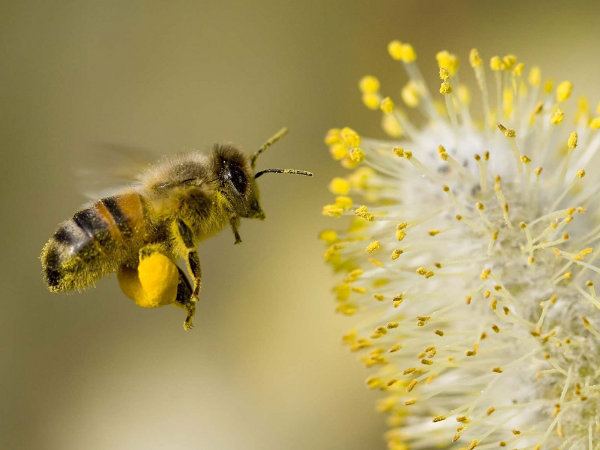 | ||
Nepal is known for its ancestral technology of beekeeping: the honey collectors risk their lives to pick wild honey up from rock walls with rudimentary equipment. Apiculture in Nepal began 20 years ago but is still not very developed. Several different species of honey-producing bees are known in Nepal. Only two of them are raised for apiculture: Apis cerana and Apis mellifera. These species have several qualities that are desired by humans and are vital for the pollination of flowers and forests. Bees are also useful for agriculture which is an important activity in Nepal but they have become threatened by deforestation and parasites (e.g. varroa).
Contents
Bee species
Apis mellifera and Apis cerana are the only honey-producing bees known in Nepal.
Apis cerana live in Nepal at an altitude of 60 to 3500 m (Thapa, 2001) and produces honey two times a year. The first time is during the summer (March to May) and the second time during the winter (November to December).
Apis cerana is much more resistant than Apis mellifera to cold and predators. During the winter, most Apis cerana colonies are reduced because of the harsh weather and the low amount of flowers. Nevertheless, compared to Apis mellifera, Apis cerana can survive in low temperatures (i.e. -0,1 °C) (Thapa, 2001) because their beehives (i.e. log hive) can protect themselves from the cold. Furthermore, Api cerana is resistant to the parasite, Varroa destructor. The acarid breed feeds on bees’ larva. Api melifera is very sensitive to this parasite and causes an incapacity to fly, an abdomenal malformation and appearance of cannibalism (Experimental and Applied Acarology, 2000).
Apis cerana is very famous in Nepal because of the low cost of its beehive, the log hive. Farmers can build their own beehives. The principle is to dig a hole in a trunk (the size is about 50 cm in diameter and 65 cm in height), and then a cap is necessary to protect the top of the beehive from cold and predators (e.g. Marte flavigula).
Honey development
In the Teraï, a region located at an altitude of 60 to 300 m (FAO), there are counts of about 120 000 colonies of Api cerana (Thapa, 2001). The flora is also favourable to honey-production thanks to tropical plants. The weather is moderate all year long. The log hives permit honey production from Apis cerena.
